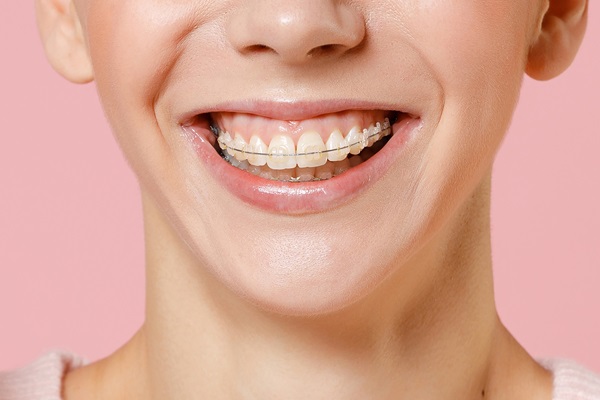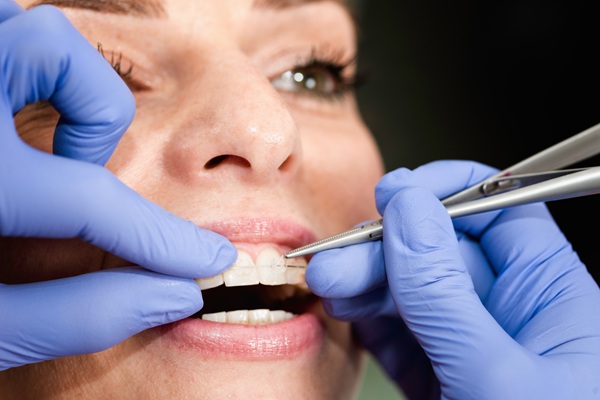4 Tips for Knowing Whether Ceramic Braces Are Right for You

Curious about ceramic braces? Read on to learn more about this teeth-straightening option. Ceramic braces, sometimes known as transparent braces, have been available for decades. Although transparent aligner solutions have made them less popular, they are still a wonderful choice for people seeking reasonably discreet treatment. Ceramic braces provide patients with a less noticeable option for braces that are effective at treating a broad range of alignment problems.
4 Ways to know if ceramic braces are right for you
Ceramic braces, like conventional metal braces, require frequent visits to the dentist. The additional consultation time allows for a more customized treatment approach, resulting in better outcomes and a lower chance of relapse, where the teeth start shifting to their original positions. Treatment with ceramic braces lasts approximately as long as metal braces, which is about 18 to 24 months.
Some of the tips for determining the suitability of ceramic braces include:
1. The need for discreet and aesthetically appealing treatment
Ceramic braces utilize transparent brackets and white or tooth-colored archwires instead of the bulky and conspicuous metal used in conventional braces. Ceramic braces blend in with the teeth and are harder to detect due to their transparency. This is often a significant benefit for individuals who desire a comprehensive treatment option without the appearance of metal braces.
2. The cost of treatment
Ceramic braces are made out of a more sophisticated material than conventional braces. As a result, it is understandable that the average treatment cost for ceramic braces is somewhat greater. Nonetheless, the low-profile feature of ceramic braces may be well worth the extra expense for certain individuals. Ceramic braces may be a preferable option for patients who would be concerned about the look of conventional metal braces as an adult.
3. The need for comfort
Traditional braces are not only noticeable, but they are often inconvenient too. Metal brackets on traditional braces sometimes irritate, rubbing against the lips and causing discomfort and itching. Ceramic braces are made of a less abrasive substance that usually offers a more pleasant overall experience. Ceramic brackets will not irritate the gums or cause chafing on the inside of the cheeks. In reality, most patients only feel discomfort after their tightening sessions, and it is typically quite tolerable.
4. Maintenance requirement
Ceramic braces feature clear brackets and tooth-colored or transparent wires. As a result, they are very stain-prone. Patients need to avoid foods, beverages, and habits (such as smoking) that can stain ceramic braces. Immediately washing the mouth with water and brushing after consuming teeth-staining items can help prevent stains.
Patients who opt to receive ceramic braces will need to pay extra attention to brushing and flossing. If the commitment seems like a lot, it is advisable to look into a low-maintenance treatment alternative.
The bottom line
Aesthetics, affordability, comfort, and maintenance are the major distinctions between ceramic and traditional braces. Ceramic braces may be more practical and appropriate for a patient's lifestyle, depending on their priorities. To know if you are a candidate for this treatment, book an appointment with our dental office today.
Request an appointment here: https://www.bracesbyabbadent.com or call Braces By Abbadent at (563) 484-5202 for an appointment in our Dubuque office.
Check out what others are saying about our dental services on Yelp: Ceramic Braces in Dubuque, IA.
Recent Posts
You may have seen someone wearing ceramic braces without even knowing it. These are most well-known for their discreet appearance and are ideal alternatives for patients who are concerned about how noticeable their braces would look. Read on to learn more about why ceramic braces are trusted among orthodontic professionals.Ceramic braces are among the most…
Space maintainers are great resources that are used in dentistry and orthodontics. They are small, metal dental pieces that are placed where a tooth once was, whether it be an adult or baby tooth. Keep reading to find out more about space maintainers.Outlined below are a few things to know about space maintainers, including what…
Orthodontic treatments are not just for children and teenagers. Adult braces are becoming increasingly popular due to advancements in orthodontic technology and the growing awareness of the importance of a healthy, well-aligned bite. For those considering adult braces, there are a few key things to remember before starting the journey toward a straighter smile. Misaligned…
Teeth straightening is a popular dental procedure for people who want to improve their smile. There are several methods that people can choose from that can resolve a wide range of dental issues. If you want straighter teeth, you can definitely benefit from orthodontic treatment. Read on to learn about the different types of braces…


